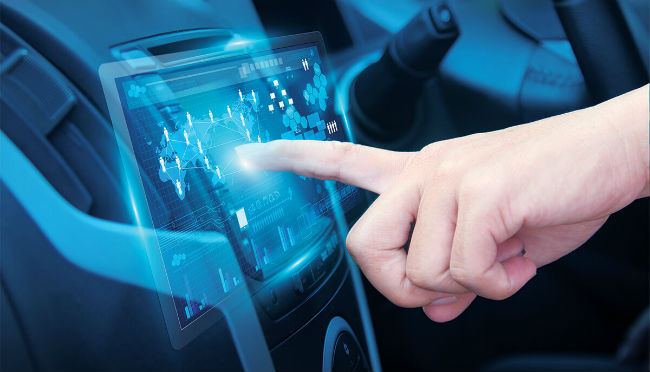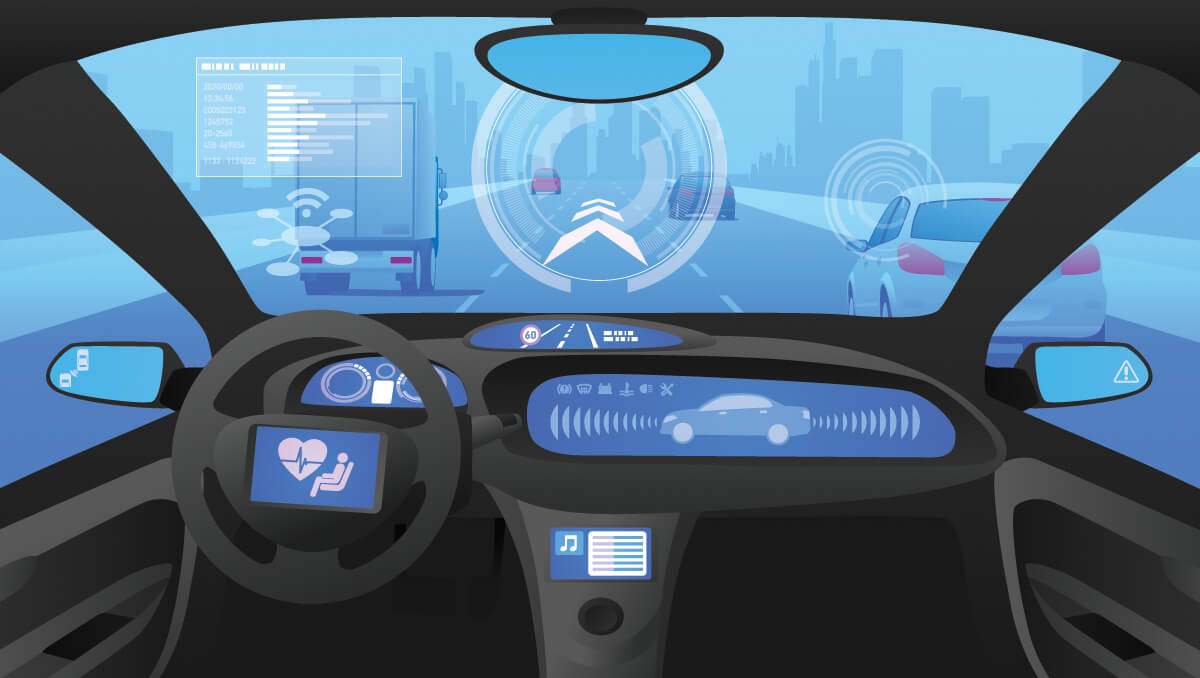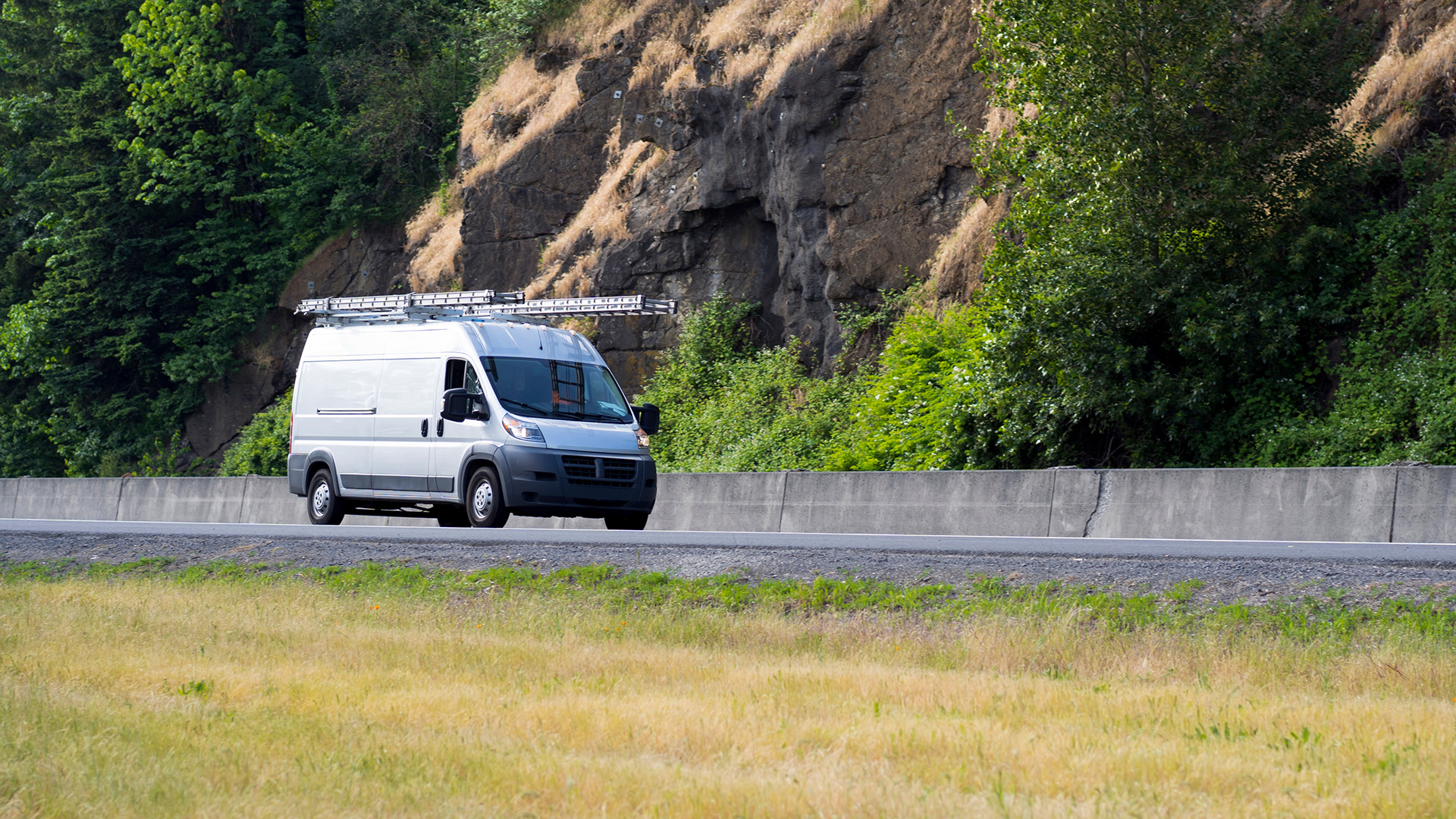Open cars: The future of transportation?
Will the car of the future be open or closed? A review of the landmark article "Open Cars" by L. Determann and B. Perens and a discussion about the future of connected cars.


In this blog post, Damian Kraemer and Dirk Schlimm review the upcoming landmark article “Open cars” by Lothar Determann and Bruce Perens and provide the Geotab perspective on this crucial topic for the transportation and mobility industry. (An advance copy of the Determann & Perens article can be downloaded here).
See also:
Are connected car regulations up to date?
Two competing visions of the car of the future
In an upcoming article slated for publication in Berkeley Technology Law Journal, two world leading experts in the field of privacy law and open source computing, Lothar Determann and Bruce Perens,1 ask a question of far reaching implications for business, consumers and governments as well as the auto and computer industries: What will be the nature of the car of the future, more specifically, will the car of the future be open or closed? Determann and Perens perform a broad survey of the technological, economic, policy and legal aspects of the question which makes their piece required reading for anyone connected to the transportation and mobility industry. While the background of at least one of the authors may suggest a predisposition to openness, the authors are careful to evaluate both sides of the argument which makes their piece all the more compelling.
Vehicle or information technology system on wheels?
Determann and Perens define an “open car” as a vehicle, or “information technology system on wheels” that is open to constant technology upgrades, open to a wide variety of aftermarket products, and open to the scrutiny of security researchers. It has open interfaces and openly disclosed software and hardware. It will perform best in the presence of open platforms for developers. And yet, an open car does not require “open data”. Data privacy and security can be protected as well or better than the current array of proprietary automotive products do today. At the same time, the open car will enable “data accountability” which will be useful to OEMs, customers and regulators seeking to provide reassurance in light of recent high profile scandals affecting some OEMs.
Open cars also do not require open source software. An open car may be regulated by government and be required to adhere to stringent standards in safety critical areas. Thus the defining feature of the open car is that owners and drivers of open cars will have maximum freedom to choose when and how to upgrade components and software (so long as they meet safety standards); the open car will enable coexistence of traditional long lasting components, such as the engine and the body of the car, and features that are rapidly changing, such as infotainment consoles and automated driving systems.

The authors explain that a “closed car” has its own merits: A “closed car” remains locked down by its original manufacturer, which is in most cases a large company with a strong brand, good safety track-record, well-capitalized, subsidized or supported by governments, and generally considered more trustworthy than many smaller companies. The OEM retains the power to choose if and when updates and upgrades are offered, with what functionality, and at what price. Owners of closed cars will have fewer choices and may have to discard an automobile if the OEM does not offer updates that are attractive, reasonably priced or necessary from a safety perspective in the rapidly evolving world of connected, autonomous cars. In that sense, a car will first and foremost remain a car rather than become a “computer on wheels.” A worthwhile thought given that the safety implications of a vehicle are much more evident and immediate than those of a laptop computer.
Nonetheless, perhaps the most compelling analogy to the debate around open cars is the rise of the PC industry in the 1990s. On PCs one could freely swap components, update software and choose which applications to install and remove while each component, update and application remained subject to its own set of quality control regimes, requirements and standards; each could communicate with the others and function together using common communication protocols. The proprietary computers of the day, however, where nearly entirely closed with almost every potential piece of hardware or software either created by the manufacturer itself or subject to its tight control.
Competing for the future of the car
Fundamentally, for the authors, the difference between an open car and a closed car comes down to whose choices matter most. In an open car, the choices of the vehicle owner and/or driver are paramount. In a closed car, the choices of the OEM are most important. Open cars are thus a threat to certain business models. Most notably, the “razors and blades” (or “printers and ink”) type of business model is directly threatened by open interfaces and platforms and proprietary parts models would likewise be under threat.
Determan and Perens are advocates of a free market system. In such a system, companies (such as OEMs) are generally free to design their products at their discretion which could include a closed concept.Yet, a free market would equally as strongly argue for consumer choice and the presence of a rich aftermarket, long a key component of a vibrant transportation sector. Of course some OEMs may opt for a proprietary model while others prefer an open model.The authors predict that an open car will outshine its closed competition on issues of technology, competitiveness, sustainability and environmental policy. Open cars would be able to be upgraded to use the latest and best technology in hardware and software. There would be open competition for who was best able to provide the upgrades based on capability and price while still meeting safety and emissions standards. Upgrading a vehicle’s computer systems is less costly and more environmentally friendly than replacing the entire car and open disclosure of software and hardware would allow experts from around the world to audit an open car’s safety and environmental performance.

The authors carefully consider the role of government. Open cars, they argue, will live and die by the standards that govern them. Governments can be most helpful by encouraging broad based, fair standards that address the interests of as many stakeholders as possible: vehicle owners, drivers, OEMs, pedestrians, other drivers, fleet managers, and others.
Different OEM approaches
Determann and Perens do note that at least some traditional automakers seem to be considering more open business models, involving open platforms and standards. These OEMs have been carefully observing business models that information technology companies have successfully introduced with respect to smartphones and other devices. Traditional car manufacturers rightfully perceive information technology companies as their biggest challengers in the years ahead. Some have started to build increasingly connected cars in reliance on robust, open developer communities. At least a few will no doubt attempt to replicate the successes of Apple and Google by providing an open platform that others can build upon; and they may well succeed. In the process, they will likely discover for themselves what technology companies learned long ago: interoperability is valuable to consumers.
Other OEMs, however, are pursuing a strategy of closing off the car, even going so far as to assert ownership over the data produced by vehicles they manufacture. According to Determann and Perens, opposition to open cars is motivated by three factors: economics, policy and ignorance. The economic motivation is most easily understood. One can realistically expect that the most vociferous opposition to open car standards will come from companies most invested in business models that are directly threatened. The policy motivation is often misunderstood insofar as it is not usually opposition to open cars per se, but willingness to sacrifice openness for other considerations thought to be more important; often security, safety or privacy. Here policy motivations shade into ignorance, especially when policy makers do not understand that perceived trade-offs may not be necessary. For example, openness and security often come together, in spite of intuitions to the contrary.
Open cars and cyber security
Advocates for closed cars cite concerns over cybersecurity, safety and data privacy; but upon closer review, Determann and Perens suggests that risks in these areas do not truly justify roadblocks for open cars but should be better understood to support increased openness. Cyber security in closed systems is generally illusory. Security through obscurity is well-known to be among the least effective ways to secure electronic systems. Well designed code can be entirely public and still provide the best security available. Safety standards can just as easily apply to aftermarket suppliers as to OEMs and open cars do not imply open data. Controls on the data generated by cars can be made independent of the openness of the car’s various sub-systems.

Open cars and the Law
After reviewing current laws in a variety of fields, Determann and Perens conclude that current laws are not holding the open car back. Right-to-repair statutes that require OEMs to provide the same tools and information to independent mechanics as they do to their dealers help. Competition laws preventing tying, monopoly and unfair warranty practices also provide a strong tailwind pushing for the adoption of open car standards. Intellectual property laws, although leaning the other direction, do not present any insurmountable obstacles to open cars. Automotive product and safety rules have not yet dictated a preference for open or closed; and onboard diagnostic ports – originally required to monitor emissions by the California government – have become a gateway to openness and transparency.
However, there are dangers. Product liability concerns and the exaggerated cybersecurity concerns create hurdles. If manufacturers of open cars are held responsible for risks created by third party software or parts this could also slow the development of open car platforms. Automakers may be (or become) reluctant to open their products further. They may even decide to lock products down if they are indiscriminately held responsible for cyberattacks and the like. The sheer burden of litigation may be enough, especially in the US. Sector-specific legislation and regulation may be required if courts take a wrong turn in this respect. Proper allocation of liability and burden of proof may dictate how some OEMs respond. Shared liability models and insurance can play a role here.
Now is the time to enter the discussion
Determann and Perens have kicked off an important debate. It is now important that all stakeholders in transportation and mobility, especially those on the consumer and business customer side, make their desires and preferences known. And it will be up to OEMs, automotive aftermarket companies and technology providers to rise to the challenge. In addition to functionality, quality, innovation, and price, the challenge will include safety and security – the new frontier in the connected economy well beyond the auto sector.
Geotab’s take on “Open” versus “Closed”
Geotab “open”, enterprise-grade telematics platform offers the “connected car” today; it is used by commercial and public service fleets, as well as leasing, rental car and car sharing companies for a range of smart mobility services and data driven fleet management. In Geotab’s case, “open” means that the platform can easily be integrated with and connected to other solutions and services. As an aftermarket specialist the Geotab solution is currently interoperable with all major vehicle brands, makes and models used by professionally managed fleets making it a favorite for the world’s largest global fleets.
Having experienced the power of an open vehicle and fleet data platform it is only natural that Geotab favors an open car approach as a means for mobility innovation, customer value and choice, and contributing to solving the world’s transportation challenges including greenhouse gas emissions, driver and road safety, and efficient vehicle use (including sharing).
The discussion about open cars has current “live” relevance for smart mobility systems based on vehicle generated data (including technical and position data). In commercial applications, these systems have become an essential part of modern transportation management for some time. While open systems have been by and large the norm, of late there is more discussion about “extended vehicle” (i.e. proprietary or closed) concepts introduced by some OEMs and others. These extended vehicle concepts are based on OEM provided and controlled vehicle data rather than independently accessed, owner controlled vehicle data.

Majority of current customer base leans towards aftermarket mobility platform (with access to the On Board Diagnostic (OBD II) port:
Based on many conversations with our customers, both at an individual and association level, there can be little doubt that Geotab’s “open” enterprise-grade, aftermarket telematics platform provides customers with the preferred smart mobility and fleet management solution. This open access is provided through full OBD data access and interoperability with industry standard telematics devices. In particular, Geotab’s OBD based system includes the following advantages for fleet customers and public entities (e.g. cities) grappling with transportation challenges:
- Rich, high value/high quality data set (currently unmatched by competitors, including proprietary closed systems). This data has become essential to advancing driver and road safety (e.g. seatbelt use, accident reconstruction, reducing fuel cost and greenhouse gas emission (fuel consumption, idling, “indirect” emission drivers such as tire pressure), and improved vehicle reliability and safety (predictive maintenance, warranty administration).
- Ability to manage mixed vehicle fleets on a common platform. Mixed fleets include diversity of make, model, and year, vehicle type (conventional and electric), and global fleets.
- Availability of independent and transparent data providing accountability. This provides checks and balances to OEM published vehicle data and supports OEMs who report data transparently and correctly.
- Open architecture to facilitate integration of third party services. A host of connected products and services is available on geotab’s marketplace.
- Established product integrity, security and safety record; Geotab collaborates proactively with partners and authorities to keep advancing security.
- Support public sector entities (cities, highway administrators) with actionable intelligence (e.g. big data driven identification of dangerous intersections, cyber threats, and reporting irregularities).
- Cost competitive.
The customer preference for an open telematics platform based on data access via the OBD II port is among the recommendations issued by the NAFA Fleet Management Association.
Geotab is proactively addressing industry-wide product safety and security for open telematics platforms.
Like with any automotive aftermarket component or system, safety and security are key concerns; they have to be designed robustly and be supported by an actively managed product integrity program. Geotab welcomes the OEM and government-led initiatives to highlight safety and (cyber) security concerns associated with the connected car.
Geotab has made available a detailed safety white paper and has monitored safety performance of over 500,000 installed units. There has been no case of a reported accident loss where the Geotab system was found at fault.
Geotab shares the concern over the potential for inferior systems to cause security problems and is working actively with global industry standards bodies and authorities to advance the security requirements for aftermarket telematics systems. Some of these initiatives involve direct work with the OEMs and Geotab is well acquainted (based on direct contacts) with the OEM security perspective. For example, Geotab is working with OEMs and other stakeholders on security and authentication of telematics to vehicle ECU under the auspices of ASAM and vehicle and telematics cyber security under the auspices of NMFTA.
Geotab recently published recommendations for advancing resilience of telematics platforms to cyber threats. Find the article here: 15 Security Recommendations for Building a Telematics Platform Resilient to Cyber Threats.
Open OBD data access through aftermarket systems is supported by economic, policy and legal arguments.
There currently is strong market demand for aftermarket OBD telematics platforms as a key component of leasing and fleet innovation and economics. Many of the largest fleets in the world now rely on telematics data to run their business and cannot manage their large fleets without it. They rely on “open access” especially as they consider fleet data to be “their” data.
However, Geotab is well aware of the competing vision of an “extended vehicle” with OEM provided and licensed vehicle data. Geotab expects that at least some OEMs will promote this concept as part of their innovative contribution to the automotive and broader mobility sector. Ultimately the automotive companies, both traditional and new entrants, government regulators, and, of course, the customers will decide which vision will prevail.
OBD data access is part of the much larger debate over the future of the connected car and open versus closed automotive design. Open designs find support as innovative, competitive and transparent, whereas proprietary designs are backed by long standing quality and safety track records as well as established business models. The recent article by Determann and Perens (reviewed above) provides an in-depth analysis.

Geotab believes strongly in the future and adaptability of its business model.
Geotab’s current – main – business model is well supported by the needs and preferences of its fleet and leasing customer base and the entire aftermarket industry.
Geotab believes in a collaborative approach to telematics and is expert at partnering, integrating and working with diverse industry experts and stakeholders to develop new, innovative and alternative business approaches.
Geotab will work with and adapt to any automotive vendor who is prepared to license data as part of their extended vehicle business model. Geotab’s core intellectual property involves both analytics of data and device hardware to efficiently transfer data from the vehicle to the analytics software and has strong potential for value add in this scenario. Thus Geotab is fully prepared to license data from OEMs in an extended vehicle environment and add value using its core capabilities.
Future ready.
Geotab provides an advanced, versatile, and secure telematics platform that has been proven to meet the expressed needs of our customer base. Further developing industry-wide security is a particular strategic priority for Geotab. Naturally, Geotab is equally aware that OEMs are the central element of the transportation/mobility ecosystem. While Geotab will continue to educate and create awareness of the many advantages of an OBD enabled platform, Geotab is prepared to participate in a proprietary extended car licensing scheme and work with OEMs and others to advance and perfect their chosen approach for maximum benefit of fleet and leasing customers and other stakeholders.
References:
- Determann & Perens, Open Cars, 32 Berkeley Tech. L.J. 2 (Forthcoming 2017)
Subscribe to get industry tips and insights

Dirk Schlimm brings more than 30 years of experience as a business leader, a legal executive, executive coach and educator to his role at Geotab.
Table of Contents
- Two competing visions of the car of the future
- Vehicle or information technology system on wheels?
- Competing for the future of the car
- Different OEM approaches
- Open cars and cyber security
- Open cars and the Law
- Now is the time to enter the discussion
- Geotab’s take on “Open” versus “Closed”
- Majority of current customer base leans towards aftermarket mobility platform (with access to the On Board Diagnostic (OBD II) port:
- Geotab believes strongly in the future and adaptability of its business model.
- Future ready.
Subscribe to get industry tips and insights
Related posts

Field service is losing money to bad data: Go beyond GPS with smarter telematics
June 27, 2025
3 minute read


Enhancing winter road maintenance with postseason materials usage analyses
June 20, 2025
6 minute read

Building a self-sustaining school bus driver safety program with Geotab Vitality
June 13, 2025
7 minute read

The impact of unproductive idling on police vehicle service life
June 10, 2025
3 minute read

Unlock field service ROI: Your practical guide to connected operations playbook
June 9, 2025
3 minute read